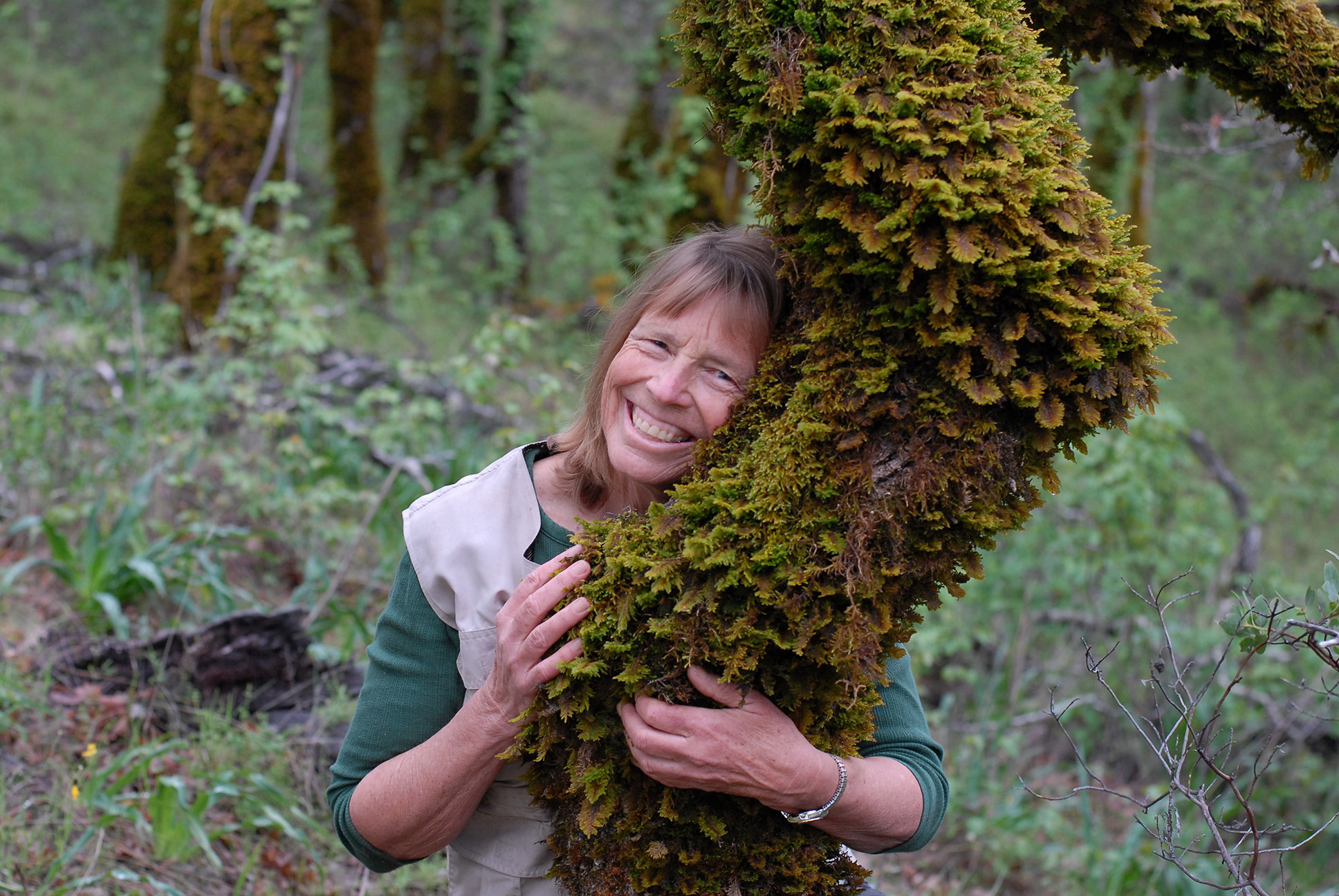Skip to content
and a big hug for your donation!

PS. One of the reasons I love rainy winters here in Mendocino County is the beautiful moss that comes alive in winter. The kind I’m hugging on this blue oak is Dendroalsia abietina.
Mosses are epiphytes, a word that means “on plant,” referring to the fact that mosses do not have roots. They don’t have a vascular system and receive almost all of their nutrients from stem flow –– the water than runs down the trunk, which they absorb through their cell walls. They also pull carbon from the air to photosynthesize sugars. Like lichens, which many people confuse with moss,* mosses are metabolically active only when they are wet, so they have long periods of dormancy during California’s long summer drought.
Have you ever seen clumps of moss on the ground, all in the same small area, in winter? I have seen jays rapidly and repetitively tug moss off of tree limbs and fling it to the ground, presumably looking for insect larvae. I believe ravens do the same. Western gray squirrels line their nests with moss, another activity that happens in winter, so they may be responsible for some of those fallen clumps. When mosses end up on the ground, they enrich the soil and contribute to the nutrient cycle. To learn more about moss, you might enjoy reading, Gathering Moss by Robin Kimmerer and The Signature of all Things by Elizabeth Gilbert.
*(Mosses are non-vascular one-cell thick plants, whereas lichens are not plants at all but rather composite organisms consisting of one or two fungi, algae, and sometimes cyanobacteria.)
